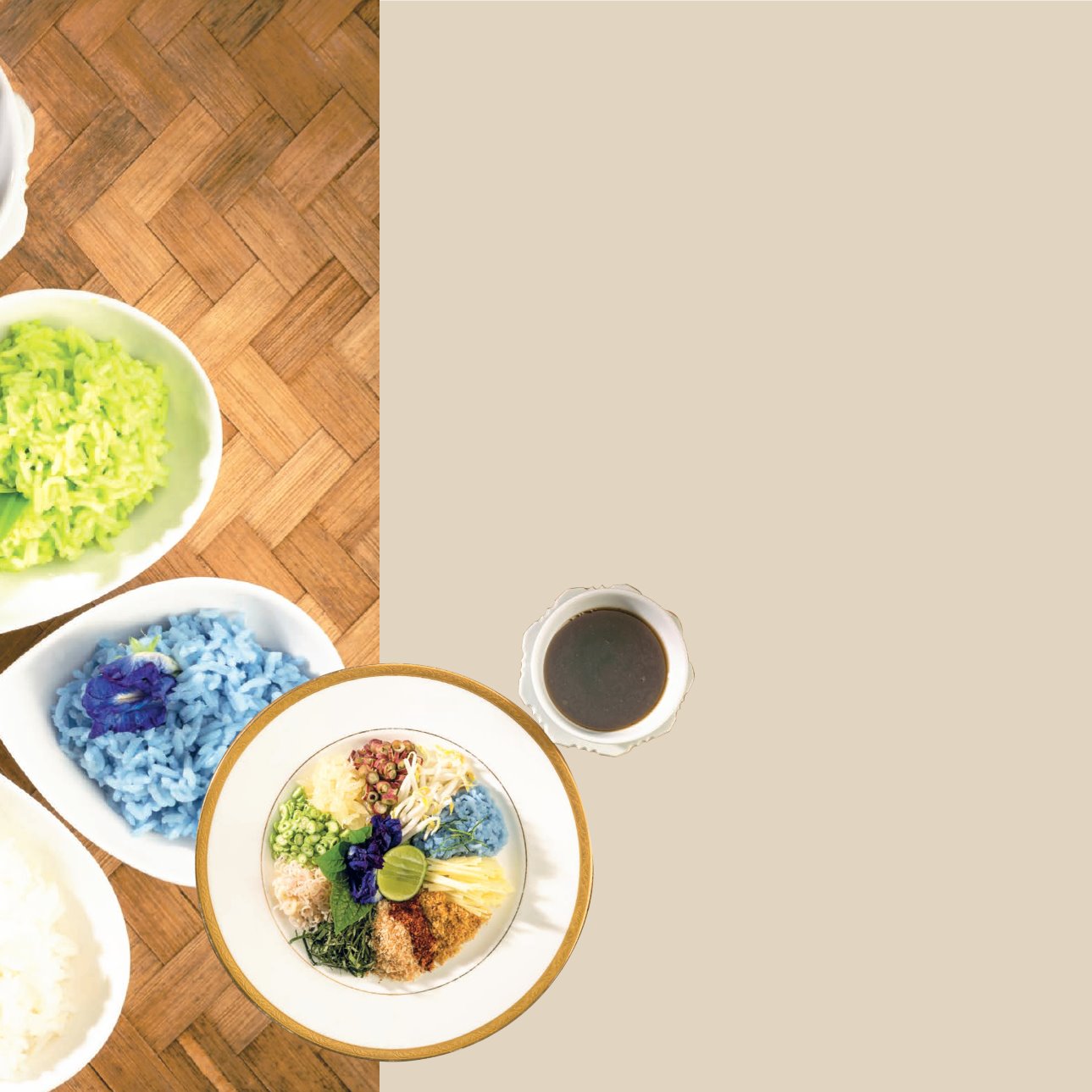

Thai Cuisine and Lifestyle
|
163
The origin of Budu sauce is from the abundant resources for the Southern Thai
people. When seafood is excessive to consume, it is processed and preserved for
longer consumption. Budu is one of the local wisdom of the Southern Thai people
who bring excessive sea fish such as anchovy to ferment with salt and become
a fermented sauce similar to fish sauce but thicker in texture. It is used for seasoning
various foods in the Southern part of Thailand, like Plara in the Northeastern region.
The taste of Khao Yum can be customized according to the preferences of
consumers. After mixing rice with roasted coconut, dried shrimp, vegetables and
Budu sauce, they may add lime juice and chilli to make more intense taste. But if
there are sour tastes from pomelo or mango already, there is no need to add lime
juice. In some recipe, they may add crispy rice or eat with boiled egg.
Khao Yum reflects the intelligent wisdom of ancestors in creating the food
complemented with 5 groups of nutritious food, comprising protein from fish and
shrimp; carbohydrates from rice, fat from roasted coconut; vitamin and minerals
from several fresh vegetables. Its medical properties include low calories, high fibers,
anti-oxidants. The original recipe even contains more medical properties, such as
cashew nut leaf to cure diarrhea, sandalwood (Kasem in Southern dialect) to relieve
flatulence, increase appetite due to its scent, and nourish the heart.
“
Budu sauce is nutritious
and rich in protein, fat,
carbohydrates and vitamins
including minerals such as
calcium, phosphorus and iron,
similar to Plara of Isan people.
Despite different raw materials
used, both of them have the
same value in terms of local
wisdom gained over a period
of time from generation to
generation, from past to
present.
”


















